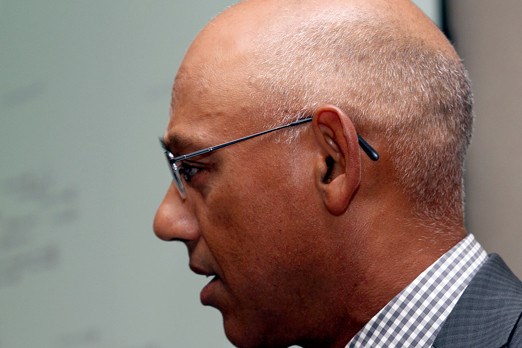Diabetes is a global epidemic rivaling the AIDS scare of the 1980s, says a prominent local physician.
Saleem Malik, who heads the newly opened, regionally focused Centre for Complex Diabetes Care, says the new facility is long overdue and will help an at-risk population manage their disease much more efficiently.
That in turn will lead to a better quality of life, he said on Tuesday, at the official unveiling of the CCDC, which will be housed at Thunder Bay Regional Health Sciences Centre, with partnerships in Sioux Lookout and the St. Joseph’s Care Group.
“Because of the enormity of diabetes, any resource is important,” Malik said. “But what’s really important for this, being based in the health sciences centre, that lots of people who come here are diabetic, who have kidney failure, other issues. They’re complicated people with type 2 diabetes in particular,” he said.
The numbers are staggering, and continue to grow.
Eleven per cent of the population is diabetic and the disease can be found in 40 per cent of heart attack victims, 53 per cent of stroke patients and 69 per cent of all people requiring limb amputations. In Northwestern Ontario, where at-risk Aboriginal populations run high, those numbers climb substantially.
The new centre, though not preventative by nature, will provide specialized care to many who had little or no access to it in the past.
“There is no dedicated diabetes service at the health sciences centre. So that’s been a missing link for ages, even though, I would suspect, about 30 per cent of our patients have type 2 diabetes. So that’s one gap that was there,” Malik said.
“Secondly it allows us to co-operate with other agencies. Triage patients, for instance, in the community … people in Sioux Lookout. We get a lot of patients coming here from up north. It’ll probably be able to give us more cohesive care for people with type 2 diabetes.”
Andree Robichaud, TBRHSC president and CEO, said while diabetes is serious, with the proper support and treatment, it’s a manageable disease.
“This is all about the patient, who we support them in their disease and how we make it more manageable,” Robichaud said.
Meanwhile Barb Linkewich, the vice-president and chief nursing officer at Sioux Lookout’s Meno Ya Win Health Centre, said the centre and its telemedicine capability will help bring communities closer together in a region that needs the care.
“This, coupled with the barriers presented by a large geographic area sparsely populated with many small and remote communities, points to the need for enhanced care,” she said. “The CCDC will help us to improve the quality of care that we offer,” she said.
The province is providing a one-time $2.6 million grant to pay for the program, one of three across the province.
But hospital administrator Lori Marshall, who pushed to be a part of the program, said she’s confident it will be extended.
“It’s our expectation that the model is actually being evaluated by the ministry. We’re one of three pilots across the province and we would expect that there will be ongoing funding once we’ve established the program and demonstrated it is actually making a huge difference,” she said.
Sign in or register
- Messages
- Post a Listing
- Your Listings
- Your Profile
- Your Subscriptions
- Your Likes
- Your Business
- Support Local News
- Payment History
Registered Users
Already have an account?
New Users
Create a free account.
